













The magazine of the art-form of the photo-essay
“A free, really high quality photo-essay magazine. Fabulous!”
Stephen Fry. British actor, writer and film & documentary maker

March 2015 back issue




At the age of seven while other kids were drawing stick figures, I was drawing anatomically well formed figures in
three dimensional rooms. It was just something I was able to do, and I was mystified why others could not do the
same. I spent many hours drawing and although my parents and friends acknowledged my ability, there was an
unstated but nevertheless clear message that being an artist was not something I should consider as a career.
My father was a doctor and as a very young child, I would go on his rounds into the poor areas on the outskirts of
Johannesburg.
As we drove through the narrow shantytown streets, people would come out of the shacks to point and chant his name.
I was proud of my father and the importance of his role in society, and it seemed self evident that would become a
doctor like him. Although I excelled in sports at a rigidly academic and authoritarian boys-only school, the peer status
that athletic ability carried did not compensate for my sense of alienation. In the subjugation of the system, I often felt
as though my spirit had died. The passion and joy I felt in my artistic talent were reserved for my private moments.
Unaware of alternatives, I played the game, suppressing my emotional side and opting for control as my strategy for
survival.
Later, as an intern in the emergency room of Baragwaneth Hospital in the segregated black township of Soweto, I saw
people dying not only in physical pain, but in a deeper pain of separation and hopelessness. At night, wearing a still
bloody hospital coat, I would ride my motorcycle the thirty miles back to my penthouse apartment in the all white
suburbs of Johannesburg and become the ‘artist’. Practicing medicine by day and playing the artist at night, I would
often criticize myself for not just going for it. I knew I had to be a doctor, but I also knew that something inside of me
cried out for self-expression. By the mid-sixties, the racially suppressive policy of the South African government had
begun to provoke acts of defiance and violence by a small group of black and white activists. My non-conformist lifestyle
and political associations resulted in a series of encounters with government ‘special branch’ forces and right wing
vigilantes and the powerless I felt to effect change was becoming intolerable. It was time for a radical change. I wanted
a new life, a new canvas and new challenges and bought a one-way ticket for New York. I arrived in December 1968
as an illegal immigrant carrying in one case a small portfolio of artwork and photographs, a 35mm camera and the bare
essentials of what I thought I needed to begin a new life. I was full of hope and passion to live the inspired life of an
artist but my elation at being free to explore my creativity was short lived. Unable to get work, I took to stopping people
on the streets. I would ask if I could photograph them and we would go to their apartments or lofts and hang out.
My chance encounters included Robert Mapplethorpe and Patti Smith.
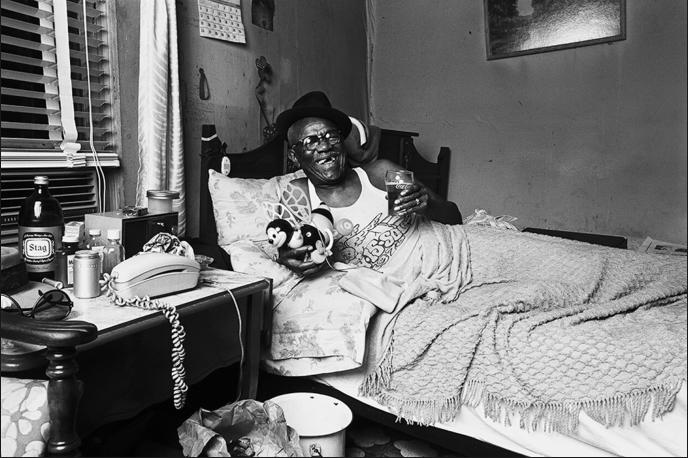
Furry Lewis, Memphis 1975.
I took a trip to the South to photograph some of the original blues artists as part of my own exploration into American
culture. I met this hippie at the airport who told me he knew everybody. It was a miraculous and unexpected moment
of fate and he became my guide. I photographed Furry in a one-room house. Furry, who was blind, wanted to be shot
with his wind-up toy and his bowler hat.

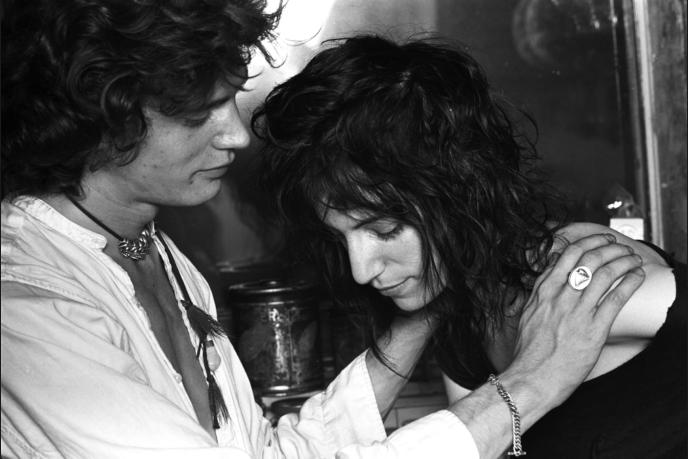
Patti Smith & Robert Mapplethorpe New York 1969.
Soon after my arrival in New York, I met Robert and Patti at a downtown Manhattan bar. I thought they looked cool and
asked them to do a session with me. The authenticity and emotional depth of their love was exactly what I was looking
for in my images. 40 years later these shots, which were simply a way for me to build my New York portfolio, have been
in great demand for book covers and television & magazine stories around the world.
I was learning a new language, a new psyche and creating a new portfolio but still no work. In a state of self-doubt, I
began to fear that my decision to follow my creative urge had been a mistake, that I was simply not good enough to
make it. And then I met Bob Cato.
Bob was a leading art director, photographer and designer of album covers and having seen my pictures of Robert
Mapplethorpe, Patti Smith, Johnnie Winter, Andy Warhol and the Factory, he offered me my first assignment – to shoot
images for the liner notes of The Band’s new album STAGE FRIGHT.
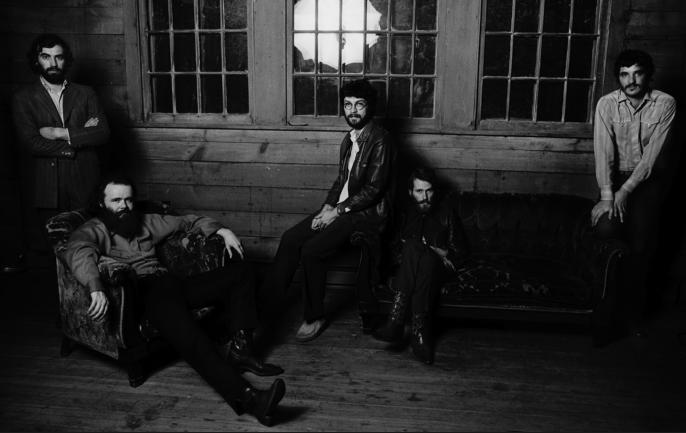
The Band, Woodstock 1970.
I bought 6 rolls of film (all I could afford), borrowed a friend’s car and headed for the Big Pink in Woodstock – driving
on the ‘other’ side of the road for the first time. I got lost and arrived 3 hours late to a very annoyed group of musicians.
With little time to set up, I shot my 6 rolls and left, believing I had surely failed. When I developed the film, there was
one image I thought might be passable but days passed before I plucked up the courage to deliver it, pushing it under
the door of Bob’s brownstone and making myself scarce. Some weeks later, encouraged by friends to call Bob, I
discovered that he had decided to reproduce my image as a poster inserted under the shrink-wrap of the album.
When unfolded, the poster became a hugely popular collectors’ item and launched my career as a ‘rock’ photographer.
Everything was now very different, record companies were calling me. In 1971, on Bob’s recommendation, I flew to
Los Angeles to become Creative Director at United Artists Records. I had been in the country for only three years and I
now headed up the design department of a major record company. I threw myself into my new role, working late into
the night photographing and designing covers, living the rock and roll high life in the bars and clubs into the early hours
of the morning. Life was defined very clearly. Rock music was the ‘new religion’ and I was creating ‘devotional icons’.
The big prize as a photographer was to get a job shooting the Beatles or the Rolling Stones and later that year, I got
an invitation to shoot the Rolling Stones for “Exile on Main Street”. UA Records allowed me to take the job creating a
series of postcards which were inserted in the album. Early the following year, as I was working on the album design,
I got the opportunity to shoot portraits of the band members.
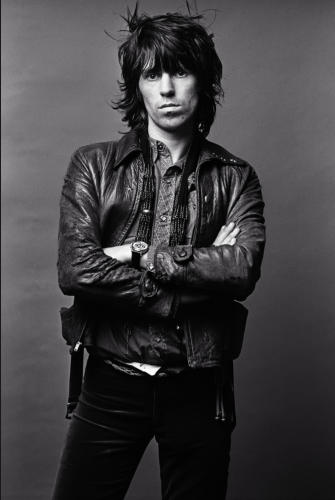
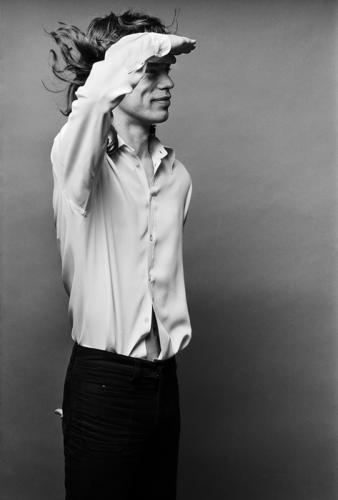
Keith Richards, Los Angeles 1972.
The big prize as a photographer was to get a job shooting the Beatles or the Rolling Stones. I got an invitation to shoot
the Rolling Stones – and that was ideal for me. They were more edgy for my tastes. I collaborated with John Van
Hammersveld on creating the EXILE ON MAIN STREET album package. Mick was very hands-on and the final
decision maker. One afternoon, we sat at a table and asked Mick to hand-write the liner notes, which we pasted onto
the album layout. We created the album package design right there in that moment. Keithis the quintessential rock star.
He was quite happy to leave all the responsibilities to Mick and just hang out and have fun. Looking at Keith through
the lens said it all. It was immediately clear to me that in its simplicity, this could be an iconic rock image.
Two years later, I decided to go out on my own and found a small A-frame house on Sunset Boulevard for my studio, in
the heart of music row and a building that now houses the famous Bar Marmont. For the next 15 years, this was where
I photographed musicians, actors, film directors, authors and public personalities.
Mick Jagger, Los Angeles 1972.
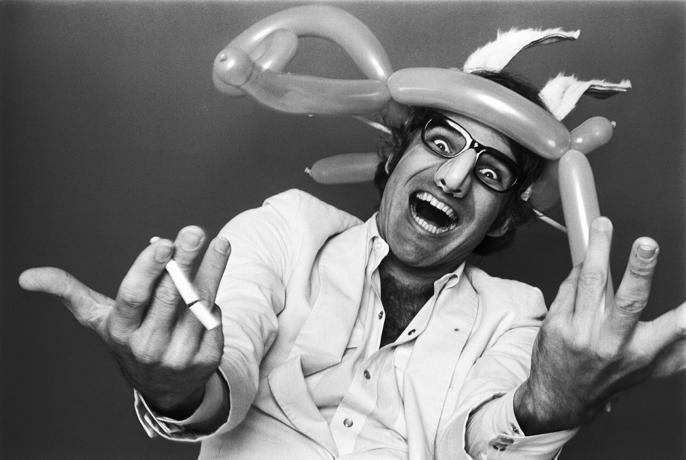
Steve Martin, Los Angeles, 1974.
When I first arrived in LA, I rented a house in Laurel Canyon and Steve lived in a bungalow on my street. His manager
gave me a short film of Steve sitting on a toilet telling jokes. I took it to the execs at UA. They looked at it but didn’t
think he was funny. My biggest problem in working with Steve was to hold the camera steady.
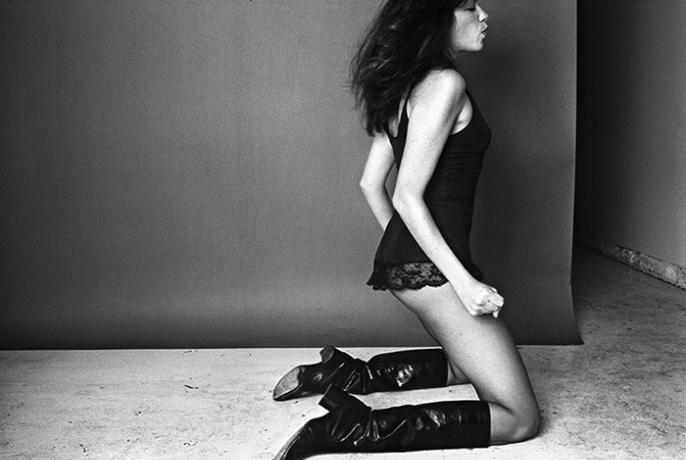
Carly Simon, Los Angeles 1974.
Carly arrived at the shoot in a fairly conservative dress but after a couple of glasses of wine, I asked her what she had
on underneath. She stripped down and began dancing around the studio to the soundtrack of SHAFT. The image Carly
chose for the cover of PLAYING POSSUM was thought to be very racy but there was no eroticism intended – she was
in the process of a series of yoga exercises while I was photographing her. She later described the shot: “Looking at
myself I thought – my god, I had a baby 4 months ago. The shot doesn’t go along exactly with the image of new
motherhood but I liked it!”
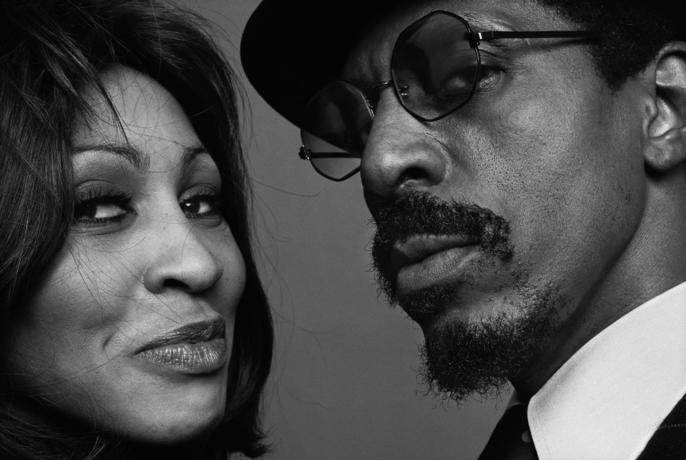
Ike & Tina Turner, Los Angeles 1975.
This was the first session I filmed. Ike and Tina were the most successful crossover R&B act at the time and I had
always loved their music. Ike is a musical genius and Tina is a powerhouse. My idea was that it would be amazing to
cut a short piece of film that captured the emotional depth of the communication and the spontaneous performances
that had become a characteristic of the session’s process. Once I developed the dailies and looked at the footage and
realized that I could capture the intensityand authenticity of the session, I knew exactly what I was going do from then
on.
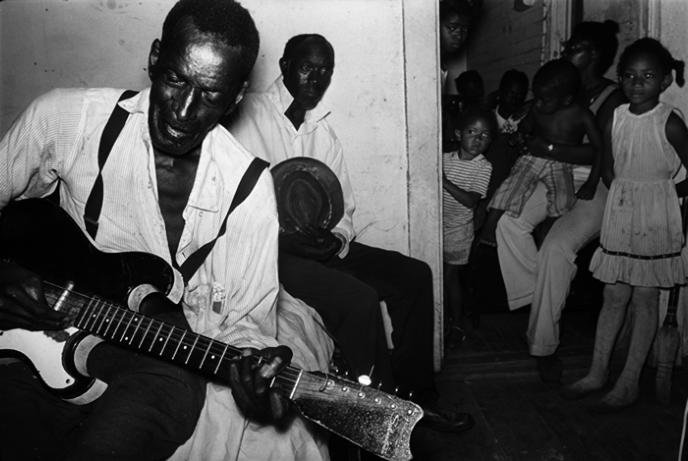
Sleepy John Estes, Memphis 1976.
I arrived in a small house far beyond the outskirts of Memphis. My guide asked Sleepy if I could photograph him.
Sleepy replied, “Okay, but he’s got to buy beer.” I couldn’t understand a word of what he was saying (his southern
accent was so extreme) and my hippy guide had to act as an interpreter. I ended up buying a lot of beer. People from
all around the neighborhood rolled up and it turned into a big party.
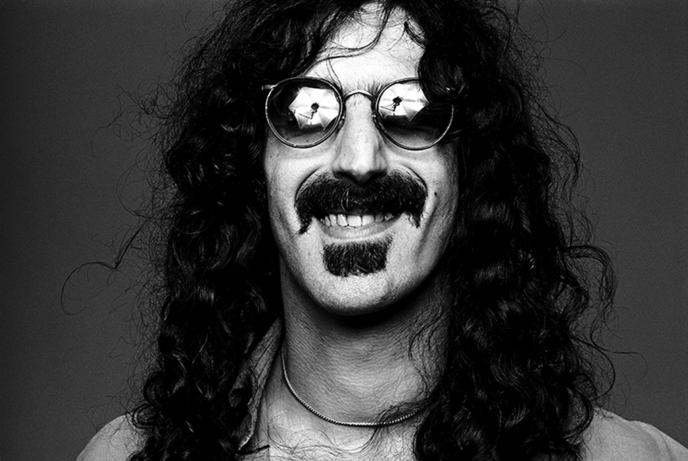
Frank Zappa, Los Angeles 1976.
My early days of shooting were very ‘trial and error’. I was exploring how to get artists to let go. Standing opposite
Frank I asked him “How far are you willing to go”? He looked at me and almost sneered, “Anywhere you want to go.”
So we hit him in the face with a pie. Big mistake. We got cream in his ear and he was not pleased. In the end we hit it
off and I worked with Frank multiple times after that.
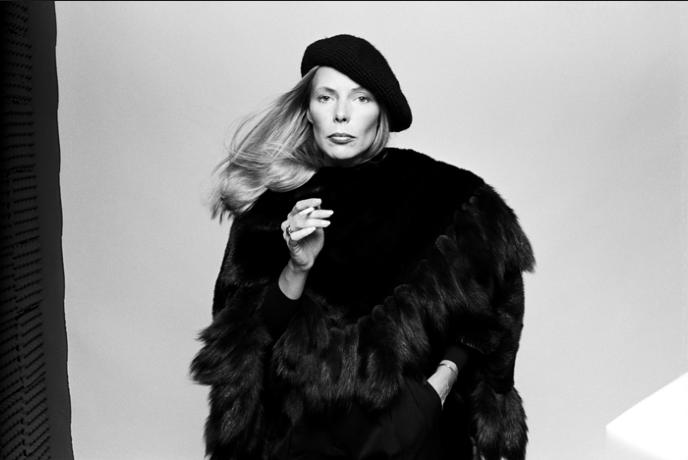
Joni Mitchell, Los Angeles 1976.
Joni Mitchell, Los Angeles 1976 One minute, Joni is lying on the street using chalk to draw the outline of her body, the
next moment I'm in her studio looking at her emotionally evocative paintings. After that, she's playing piano and
introducing me to some new work. Later, we end up shooting her in her swimming pool. Joni always came with ideas
and we would joust a bit until we agreed on what we wanted to do. Some were straight up photo sessions but once
she drove up with a bunch of wolves and we had to set up an electrified fence.
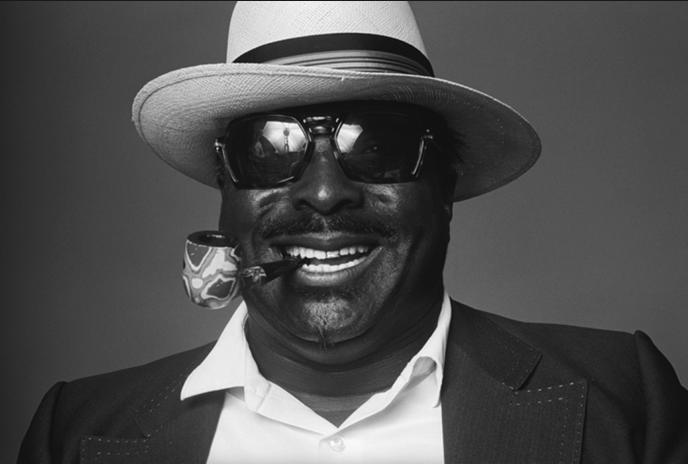
Albert King, Los Angeles 1976.
Albert came for a session in my Sunset Blvd studio. I discovered that he is an ex-cop and is simply huge in stature.
Ultimately, he sat in front of the camera singing and playing guitar. As is often the case, we have a private
performance that we filmed. There was something about his look that was so graphic I couldn’t take a bad shot.
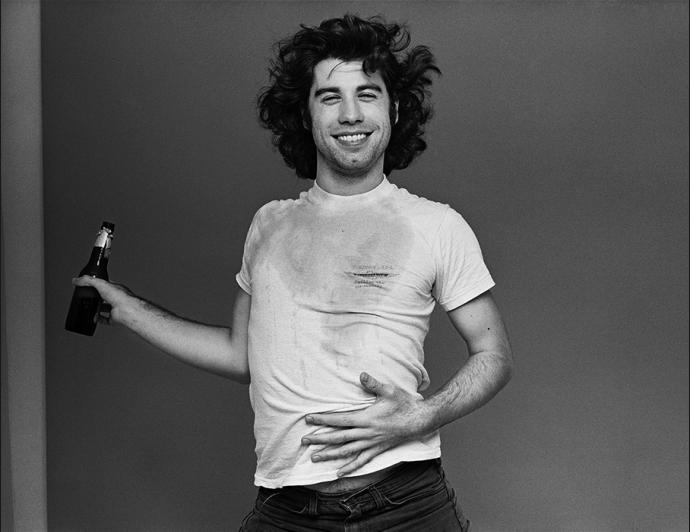
John Travolta, Los Angeles 1976.
John came to my studio for a session just prior to the production of SATURDAY NIGHT FEVER. For some reason, his
managers wanted him to do a session with a ‘rock’ photographer. Actors have a different approach than musicians.
The good ones explore the outer fringes of emotion and it can be very powerful. John was simply magnificent to work
with and was willing to explore anything I asked of him, with little resistance.
Inquiries about prints and licensing: studio@normanseeff.com
Inquiries about the LOOK OF SOUND book: Amazon
More info: www.normanseeff.com












